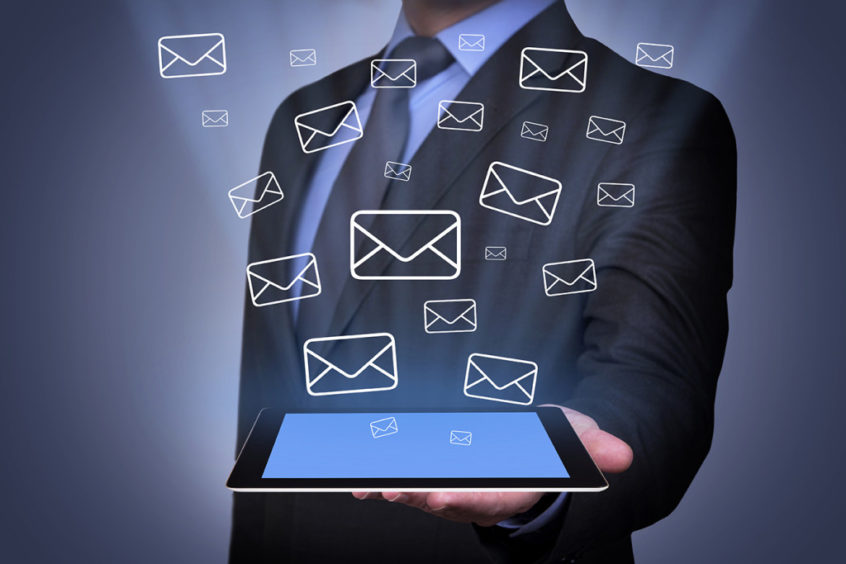Increase your productivity with data archiving and emails tips from professional photographer and director Michael Grecco.
Did you know that outside of web browsing, email communications is the most common use for the internet? Email has become the most important means of communication for professional and personal use alike. In previous blogs, professional photographer, director and creator of ProStorage hard drive storage foam, Michael Grecco has shared data archiving tips using remote and local based storage solutions. But today, we are going to discuss how you can increase your productivity by syncing emails to multiple devices and setting up your own self-hosted email account.
Increase Productivity with Email Data Archiving
Syncing your emails to all of your devices as well as developing your own data archiving system can save time and increase your productivity. Most of us use email for both business and personal use and being able to do so on the go is vital. Devices such as iPads, iPhones and laptops make that possible, therefore, they are becoming increasingly popular for email communication. Your email inbox can quickly become a scary place, but syncing all of your devices and archiving communications with an organized system can make communicating with clients, coworkers, and friends much easier to manage.
Types of Email Accounts
There are two different kinds of email accounts you may choose to use when developing your data archiving system: free accounts and paid or self-hosted accounts.
Free Email Accounts: These kinds of email accounts are offered by major search engine companies such as Google or Bing. They do not require any monthly payment or personal website hosting. Using these free accounts for business communication or sensitive personal communications is NOT recommended because they are more likely to get hacked. They also encounter routing problems that can prevent users from receiving or forwarding emails. If you use a free email account, you do not own the content of your emails and you cannot control the security systems that are used to protect them. Free email accounts are not the best option for personal or professional data archiving.
Paid or Self-Hosted Email Accounts: Some companies provide website hosting or paid email account services. These are ideal for both business and personal communications because they allow for a more personalized, professional name. For example, if you own a floral company called Fresh Florals, your business emails could be sent from “[email protected]” instead of a generic Gmail account. Free email accounts do not allow for that kind of customization. Additionally, paid or self-hosted email accounts allow for increased data archiving and organization of your email communications.
Setting Up a Self-Hosted Email Account
If you choose to pursue a self-hosted email account for your professional email communications and email data archiving, there are a few things to keep in mind. First of all, you will have the option to use a POP or IMAP account to receive your emails.
- IMAP (Internet Message Access Protocol): works as an online store and access system for data archiving
- POP (Post Office Protocol): functions as a download and delete system
Both of these systems allow users to download and store emails on at least one device but with IMAP, you can sync your emails to multiple devices from the server. You can also customize your email to do a number of things with scripts, or rules that function within your email program to sort and file your emails. If you find that your inbox is constantly overloaded with messages, scripts can be extremely useful for data archiving functions and effectively sorting, prioritizing, and addressing communications.Using scripts to create different folders that will automatically sort and organize your emails will save you the hassle and time spent manually doing it yourself. You may also want to use a spam filtering software to keep your inbox free of spammy content.
When it comes to email, data archiving is vital to your productivity. You can easily backup, store, and organize your emails with local or remote hard drives so you always have access to important information you may need to reference later. If you’re having trouble coming up with ways to organize and access your emails from all your devices, consider these suggestions for folder names:
- EMAIL_ARCHIVE: emails that you never get rid of
- EMAIL_OPT_OUT: emails including information about a service that you opted out of
- EMAIL_TO_PRINT: contains documents that you want to print later (this is useful if you’re currently using a mobile device but want to print later)
- EMAIL_TO_TRAIN_AS_GOOD: email originally received as spam but needs to be recognized as good, or legitimate communications (this requires an email filtering program with a learning filter attachment to recognize that content is good and not spam)
In addition to the above email data archiving tips, it’s also a good idea to make sure that your email account has a web-based email client associated with it. This comes in handy when you need to access your emails using someone else’s computer but don’t want to download anything to that computer. Although this may be a rare occasion, if you ever find yourself without access to your own devices, you will always be able to access your email.
Stay tuned to the How To Archive blog for more data archiving tips or visit getprostorage.com for additional archiving solutions and hard drive storage cases.
